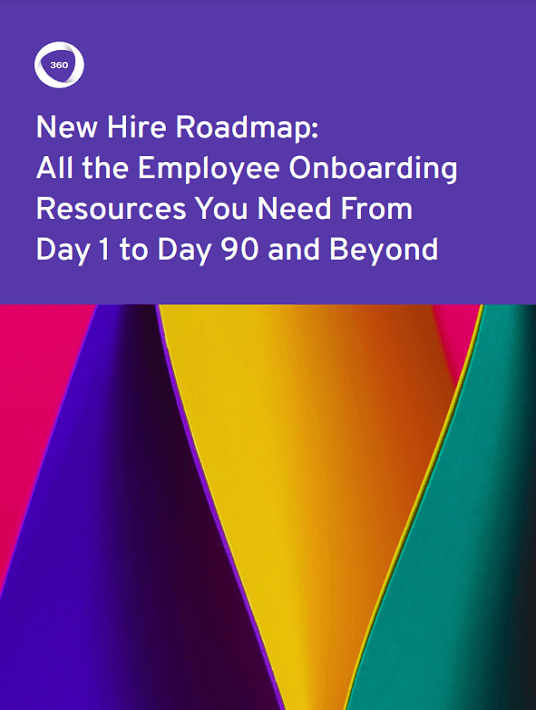3 Secrets Of Highly Successful Employee Onboarding Strategies
We've outlined a training blueprint for the first 30, 60, and 90 days of your new employee onboarding programs in the previous article. Now it’s time to get a little more specific. What are the three characteristics that all successful employee onboarding programs share?

1. Great New Employee Onboarding Programs Are Memorable And Distinct
If you’re reading this, chances are you’ve experienced your fair share of cookie-cutter onboarding. You start off by watching the standard company introduction video: here’s who we are, here’s what we do, welcome to the team. Most of the time, this company video looks at least a decade old–and in some cases, it might be even older. From there, things only get worse: you’re assigned the same flat, boring modules about company culture, HR basics, and administrative requirements. If you’re lucky, you’ll have a discovery call or two with an actual human being in there somewhere, but don’t count on it.
It’s such a shame that these kinds of employee orientation programs are often so lacking in flavor. After all, an employee onboarding course is one of the best opportunities out there to showcase what really makes your company stand out as a place to work and to boost new hire engagement by delivering something unforgettably distinct and interesting.
The real reason so many new employee onboarding programs are bland and forgettable isn’t down to a lack of distinctive company culture–it’s because for a lot of companies, employee orientation programs are an afterthought. But with the right tools and resources, you can build an onboarding program that is immediately engaging and immersive, and which tells a compelling story about what your company stands for.
At 360Learning, we do this by engaging every team to contribute their skills, talents, and subject-matter expertise to our employee onboarding courses using our Collaborative Learning platform. Which brings us to our second characteristic.
2. Great New Employee Onboarding Programs Are Collaborative
Every truly successful employee onboarding program is a team effort. It isn’t something L&D or HR just throws together on their own. You need to showcase your culture, your talents, and your collective expertise–the best way to do this is to build your employee orientation through cross-team collaboration.
This is one of the biggest benefits of Collaborative Learning, and it has huge implications for your learning culture. A peer-driven, bottom-up method for creating learning materials results in better outcomes than traditional eLearning methods–including onboarding outcomes. Employees can identify specific learning needs based on what they view as gaps in their knowledge, and in-house experts then meet those needs by working from a distance to create relevant courses.
This approach helps to create room for conversation, feedback, and iteration. You can build more effective learning materials, boost employee engagement, and encourage your teams to stick together and help each other out–even if they’re working in different countries and time zones. That’s why the peer-to-peer element of Collaborative
Learning is so crucial in a remote setting–especially for new hire engagement. You'll find more on this in chapter 4 of our eBook, including an in-depth discussion of the key role of Collaborative Learning in onboarding new hires.
3. Great New Employee Onboarding Programs Are Focused On Business Impact
New employee onboarding programs aren’t just designed to give new hires the welcome they need and deserve. Beyond making people feel comfortable in their new environment, these employee orientation programs should also be directly focused on contributing to business impact.
That’s why, in addition to being built through cross-team collaboration, all new employee onboarding programs need to be directly focused on real-world application. To take an example, let’s imagine you’re designing a product basics module for your new hires. In pulling together your learning materials, you notice that some of the competitor analysis is outdated–two of your closest competitors have now merged, and the list is missing one of the strongest new players in your market.
To keep this employee onboarding course directly focused on generating a positive business impact, you have a little work to do. First step: link up with your Product Marketing team and make sure the analysis is up-to-date. Better yet, tag them directly in the draft documentation and ask for their help to improve it. That way, you can be sure the employee orientation program is current, accurate, and equips new hires with the information they need to succeed.
Boost New Hire Engagement
This might sound like a lot of work, but it doesn’t need to be. By collaborating with others, you can build accurate employee onboarding content, alert subject-matter experts when information looks outdated, and use peer feedback to iterate on every part of every course.
This isn’t just a way to feature more accurate information–it also helps boost new hire engagement and encourage greater connections between teams. It also means L&D departments no longer need to waste time building and sourcing learning content—tasks that take up 29% of an L&D team’s time. Instead, you can become learning facilitators and have more time to meet with key stakeholders, facilitate the flow of learning content, and strategize.
So, ask yourself this question: is every single employee onboarding course in your catalogue directly related to a challenge, opportunity, or opening in your market? Have you carried out a thorough training needs analysis to identify gaps? Will completing the course better position your new hire to contribute to meeting these challenges or taking advantage of these opportunities or openings? If the answer is no, you may need to rethink your approach.
Conclusion
Download the eBook New Hire Roadmap: All The Employee Onboarding Resources You Need From Day 1 To Day 90 And Beyond to learn how to launch a new hire training program that makes a mark and fosters lifelong L&D. Also, join the webinar to stay updated with a new hire roadmap that will leverage your onboarding process!


